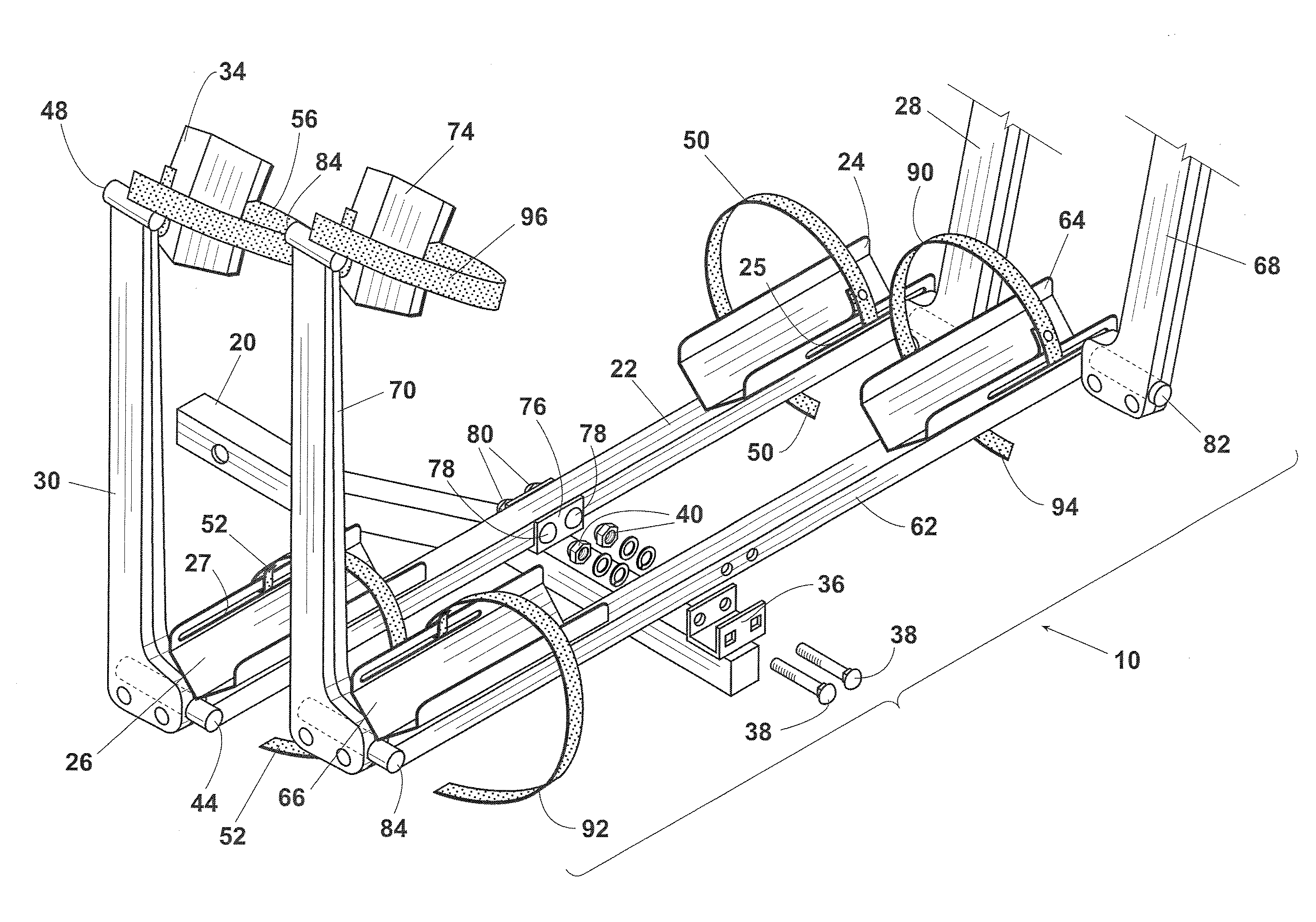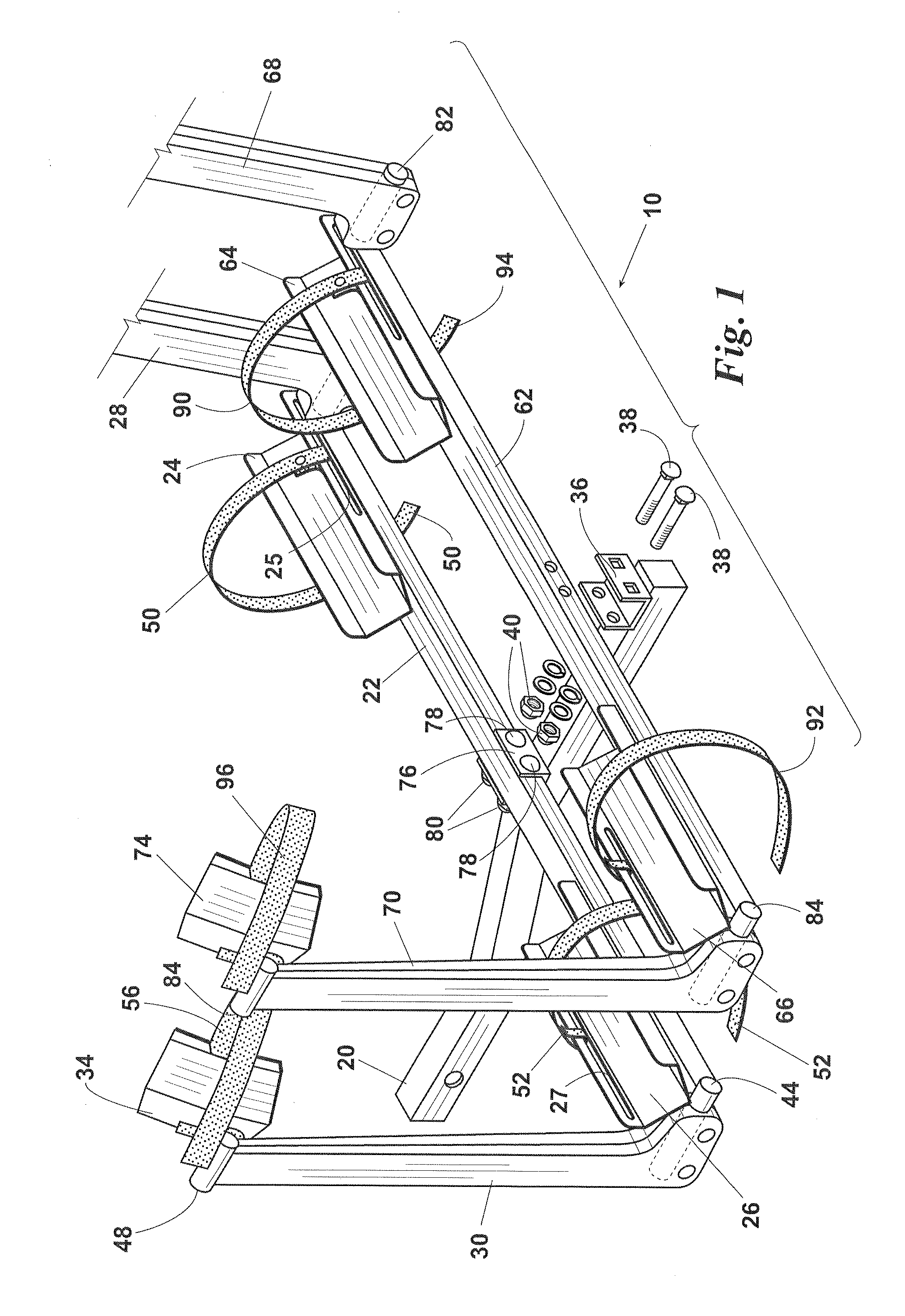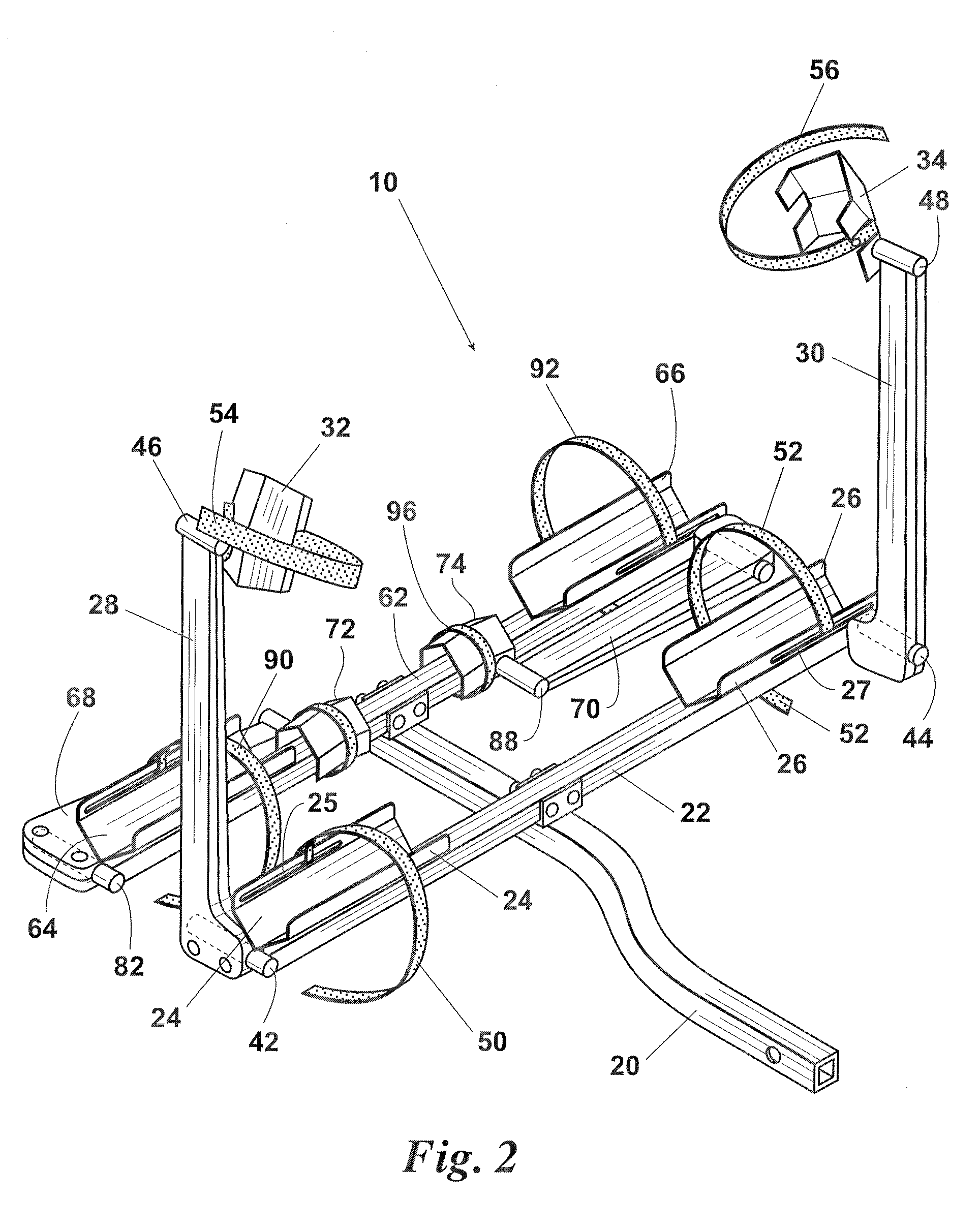Bicycle carrier
a bicycle frame and carrier technology, applied in the field of bicycle carriers, can solve the problems of dents or scratches, scratches, chipping or otherwise marring the finish of expensive bicycle frames, etc., and achieve the effect of reducing aerodynamic drag and increasing fuel economy
- Summary
- Abstract
- Description
- Claims
- Application Information
AI Technical Summary
Benefits of technology
Problems solved by technology
Method used
Image
Examples
Embodiment Construction
[0025]Referring to the FIGS., wherein FIG. 1 depicts bicycle carrier 10 of the present invention which includes generally a frame rail 20, a crossbar assembly 22, trays 24 and 26, swing arms 28 and 30 and shoe 32 and 34 (FIG. 2). In the preferred embodiment, as depicted in FIG. 1, two (2) wheel trays 24 and 26 are affixed to crossbar assembly 22. A plurality of wheeled trays such as 24 and 26 are preferred due a reduction in weight and material costs. However, it is understood that a single wheel tray could be employed of a length sufficient to receive both a front and a back wheel of a bicycle.
[0026]With reference to FIGS. 8 and 9, frame rail 20 includes a drawbar configured for insertion in a receiver 120 of a vehicle trailer hitch 122. Such trailer hitch receivers are known in the art and the frame rail 20 may be sized accordingly to fit the receiver 120. Crossbar assembly 22 is secured to a frame rail 20 through the use of a saddle 36 mounted to frame rail 20. Saddle 36 receives...
PUM
 Login to View More
Login to View More Abstract
Description
Claims
Application Information
 Login to View More
Login to View More - R&D
- Intellectual Property
- Life Sciences
- Materials
- Tech Scout
- Unparalleled Data Quality
- Higher Quality Content
- 60% Fewer Hallucinations
Browse by: Latest US Patents, China's latest patents, Technical Efficacy Thesaurus, Application Domain, Technology Topic, Popular Technical Reports.
© 2025 PatSnap. All rights reserved.Legal|Privacy policy|Modern Slavery Act Transparency Statement|Sitemap|About US| Contact US: help@patsnap.com



